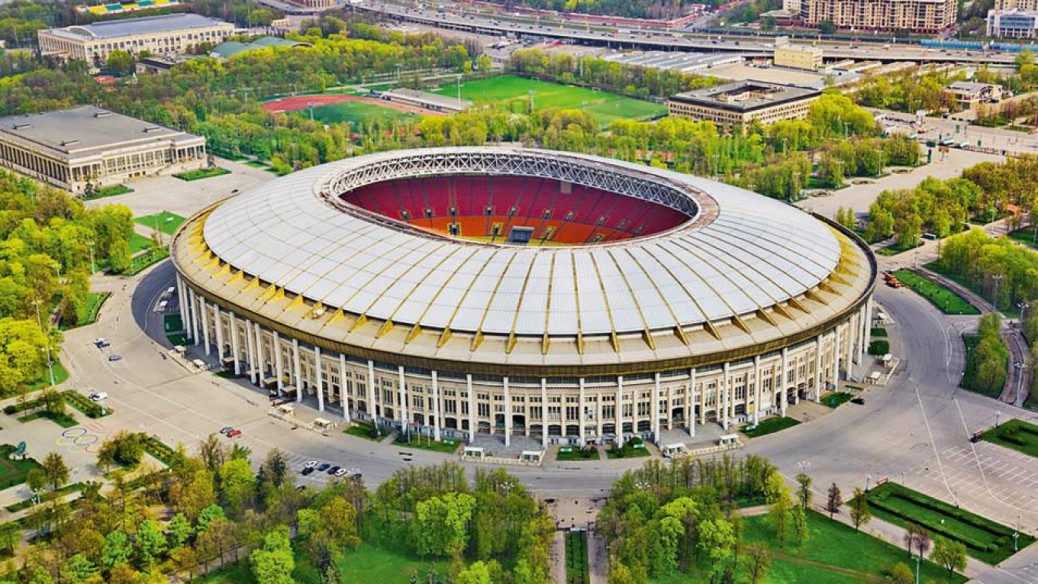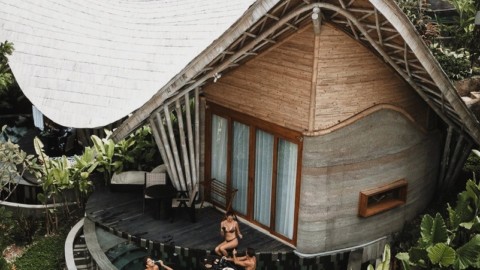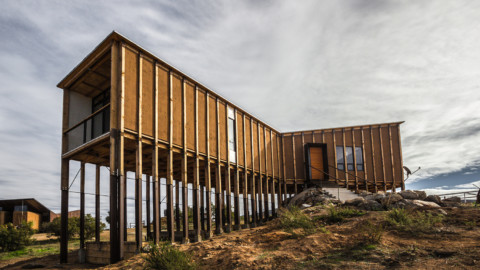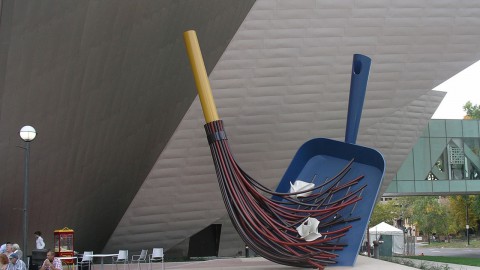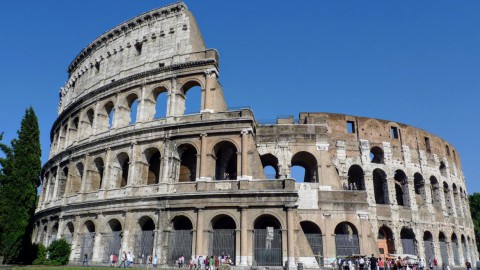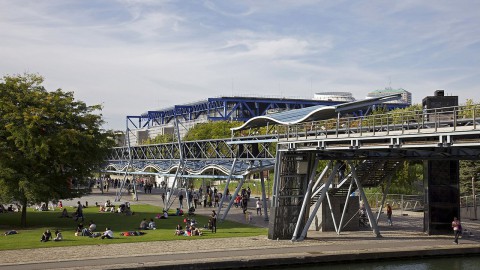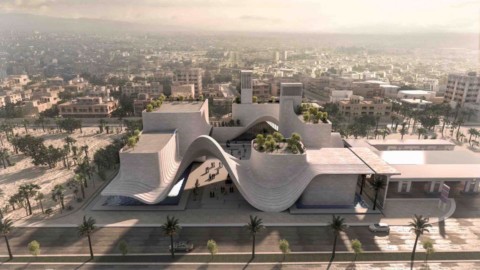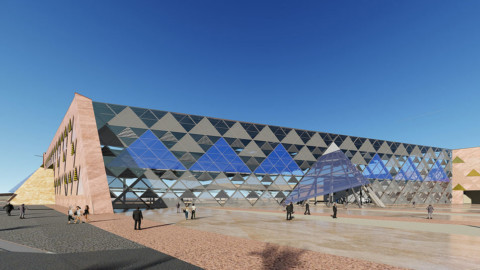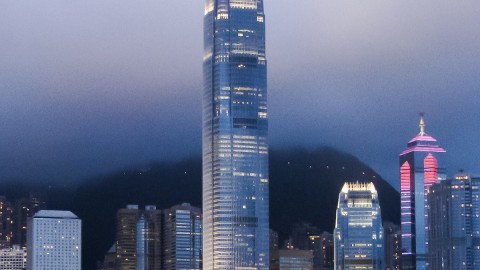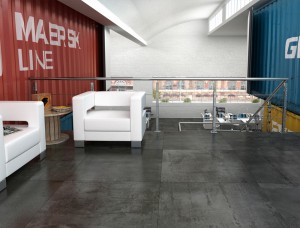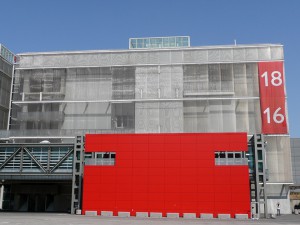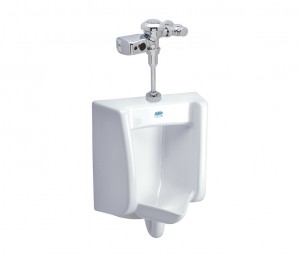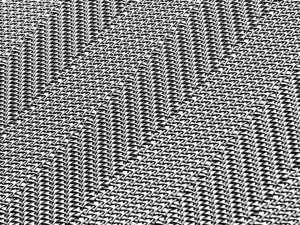Luzhniki Stadium 盧日尼基體育場
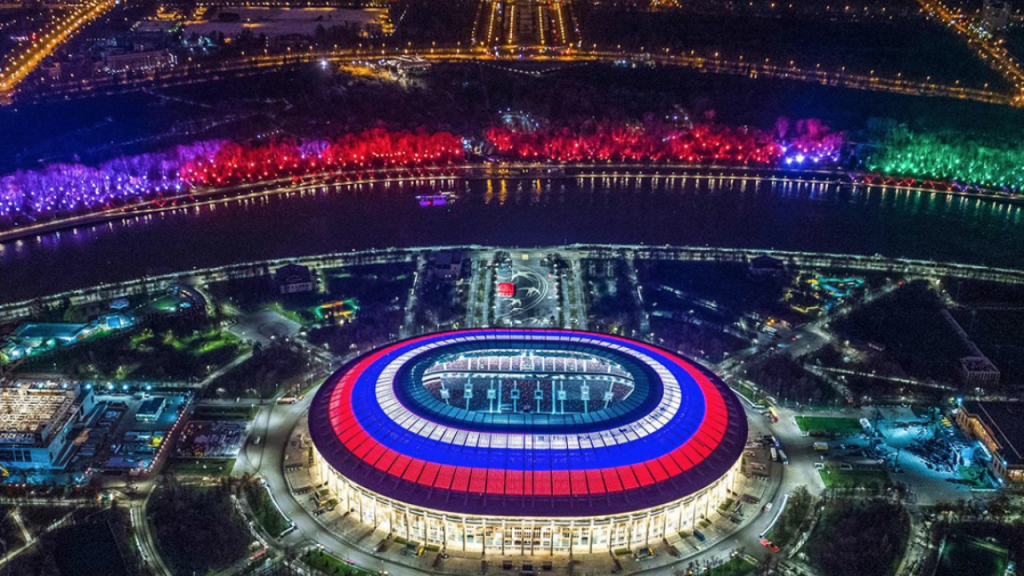
Luzhniki Stadium (Russian: стадион «Лужники», IPA: [stədʲɪˈon lʊʐnʲɪˈkʲi]) is the national stadium of Russia, located in its capital city, Moscow. The full name of the stadium is Grand Sports Arena of the Luzhniki Olympic Complex. Its total seating capacity of 81,000 makes it the largest football stadium in Russia and one of the largest stadiums in Europe. The stadium is a part of the Luzhniki Olympic Complex, and is located in Khamovniki District of the Central Administrative Okrug of Moscow city. The name Luzhniki derives from the flood meadows in the bend of Moskva River where the stadium was built, translating roughly as “The Meadows”.
Luzhniki was the main stadium of the 1980 Olympic Games, hosting the opening and closing ceremonies, as well as some of the competitions, including the final of the football tournament. A UEFA Category 4 stadium, Luzhniki hosted UEFA Cup Final in 1999 and UEFA Champions League Final in 2008. The stadium also hosted such events as 1973 Summer Universiade and 2013 World Championships in Athletics. It was named the main stadium of 2018 FIFA World Cup and hosted 7 matches of the tournament, including the opening match and the final.
In the past its field has been used as the home ground (at various times) for football games played by CSKA Moscow, Spartak Moscow and Torpedo Moscow, however, there are currently no clubs based at the stadium. Today it is mainly used as one of the home grounds of the Russian national football team. The stadium is used from time to time for various other sporting events and for concerts. It is also used to host Russian domestic cup finals.
盧日尼基體育場(俄語:стадион«Лужники»,IPA:[stədʲɪonlʊʐnʲɪkʲi])是俄羅斯的國家體育場,位於其首都莫斯科。體育場的全名是Luzhniki Olympic Complex的Grand Sports Arena。它的總座位數為81,000,是俄羅斯最大的足球場,也是歐洲最大的體育場館之一。該體育場是Luzhniki Olympic Complex的一部分,位於莫斯科市中央行政區的Khamovniki區。 Luzhniki這個名字來源於莫斯科河彎曲的洪水草甸,那裡建有體育場,大致翻譯為“草地”。
盧日尼基是1980年奧運會的主要體育場,舉辦開幕式和閉幕式,以及一些比賽,包括足球錦標賽的決賽。歐洲足球聯盟第4類體育場,盧日尼基在1999年舉辦了歐洲聯盟杯決賽,2008年舉辦了歐洲冠軍聯賽決賽。該體育場還舉辦了1973年夏季大運會和2013年世界田徑錦標賽等活動。它被命名為2018年FIFA世界杯的主體育場,並舉辦了7場比賽,包括首場比賽和決賽。
在過去,它的領域一直被用作莫斯科中央陸軍,斯巴達莫斯科和莫斯科魚雷所玩的足球比賽的主場(不同時期),但目前在體育場沒有俱樂部。今天它主要用作俄羅斯國家足球隊的主場之一。體育場不時用於各種其他體育賽事和音樂會。它也被用來舉辦俄羅斯國內杯決賽。
Former names:Central Lenin Stadium (1956–1992)
Location:Luzhniki embankment 24, Khamovniki District, Moscow, Russia
Coordinates:55°42′57.56″N 37°33′13.53″ECoordinates: 55°42′57.56″N 37°33′13.53″E
Public transit:#1 Sokolnicheskaya line Sportivnaya
#1 Sokolnicheskaya line Vorobyovy Gory
#14 Moscow Central Circle Luzhniki
Owner:Government of Moscow
Operator:Luzhniki Olympic Sport Complex JSC
Capacity:81,000 (60,000 with proposed extra platform for athletics)
Record attendance:102,538 (Soviet Union–Italy, 13 October 1963)
Field size:105 by 68 metres (114.8 yd × 74.4 yd)
Surface:SISGrass (Hybrid Grass)
Construction
Broke ground:1955
Opened:31 July 1956
Renovated:1996–1997, 2001–2004, 2013–2017
Construction cost:€350 million (2013–2017)
Architect:PA Arena, Gmp Architekten and Mosproject-4
Tenants
Russia national football team (selected matches)
CSKA Moscow (UEFA Champions League matches)
原名:列寧中央體育場(1956-1992)
地點:Luzhniki堤防24,Khamovniki區,莫斯科,俄羅斯
坐標:55°42’57.56“N 37°33’13.53”ECoordinates:55°42’57.56“N 37°33’13.53”E
公共交通:#1 Sokolnicheskaya線Sportivnaya
#1 Sokolnicheskaya線Vorobyovy Gory
#14 Moscow Central Circle Luzhniki
所有者:莫斯科政府
接線員:Luzhniki Olympic Sport Complex JSC
容量:81,000(建議額外的田徑平台為60,000)
出勤記錄:102,538(蘇聯 – 意大利,1963年10月13日)
場地大小:105乘68米(114.8碼×74.4碼)
表面:SISGrass(雜交草)
施工
破土動工:1955年
開業時間:1956年7月31日
裝修:1996-1997,2001-2004,2013-2017
建設成本:3.5億歐元(2013-2017)
建築師:PA Arena,Gmp Architekten和Mosproject-4
租戶
俄羅斯國家足球隊(精選比賽)
莫斯科中央陸軍隊(歐洲冠軍聯賽)
Location
The stadium is located in Khamovniki District of the Central Administrative Okrug of Moscow city, south-west of the city center. The name Luzhniki derives from the flood meadows in the bend of Moskva River where the stadium was built, translating roughly as “The Meadows”. It was necessary to find a very large plot of land, preferably in a green area close to the city center that could fit into the transport map of the capital without too much difficulty.
According to one of the architects: “On a sunny spring day of 1954, we, a group of architects and engineers who were tasked with designing the Central stadium, climbed onto a large paved area on the Lenin Hills… the proximity of the river, green mass of clean, fresh air – this circumstance alone mattered to select the area of the future city of sports… In addition, Luzhniki is located relatively close to the city center and convenient access to major transport systems with all parts of the capital”.
地點
該體育場位於莫斯科市中央行政區的Khamovniki區,位於市中心的西南部。 Luzhniki這個名字來源於莫斯科河彎曲的洪水草甸,那裡建有體育場,大致翻譯為“草地”。 有必要找到一塊非常大的土地,最好是在靠近市中心的綠色區域,可以很容易地進入首都的交通地圖。
根據其中一位建築師的說法:“在1954年陽光明媚的春日,我們,一群負責設計中央體育場的建築師和工程師,爬上了列寧山上的一個大型鋪砌區域…… 河流,綠色乾淨,清新的空氣 – 這種情況對於選擇未來體育城市的區域至關重要…此外,Luzhniki位於相對靠近市中心的地方,方便前往主要交通系統的所有部分 首都“。
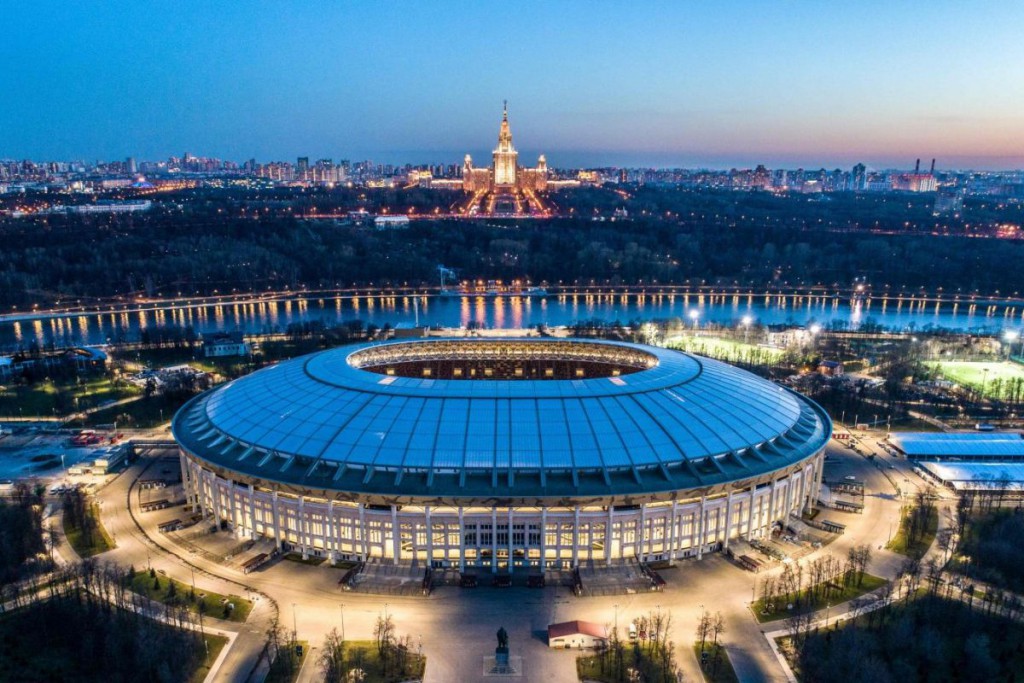
Playing surface
It was one of the few major European football stadia to use an artificial pitch, having installed a FIFA-approved FieldTurf pitch in 2002. However, a temporary natural grass pitch was installed for the 2008 UEFA Champions League Final.
In August 2016 a permanent hybrid turf was installed, consisting of 95 percent natural grass reinforced with plastic.
打表面
它是歐洲為數不多的使用人工球場的主要歐洲足球場之一,於2002年安裝了FIFA批准的FieldTurf球場。然而,2008年歐洲冠軍聯賽決賽安裝了一個臨時天然草坪。
2016年8月,安裝了一種永久性混合草皮,其中95%是用塑料增強的天然草。
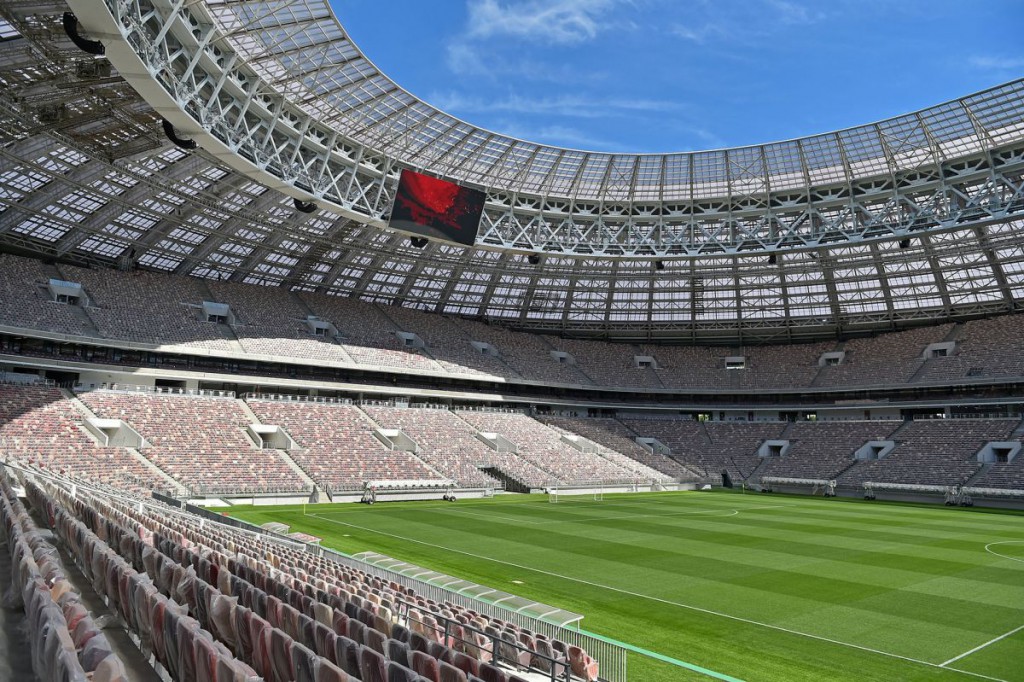
Background and early years
On 23 December 1954, the Government of the USSR adopted a resolution on the construction of a stadium in the Luzhniki area in Moscow.
The decision of the Soviet Government was a response to a specific current international situation: By the early 1950s, Soviet athletes took to the world stage for the first time after the Great Patriotic War, participating in the Olympic Games. The 1952 Summer Olympics in Helsinki brought the Soviet team 71 medals (of which 22 gold) and second place in the unofficial team standings.
It was a major success, but the increased athletic development of the Soviet Union, which was a matter of state policy, required the construction of a new sports complex. The proposed complex was to meet all modern international standards and at the same time serve as a training base for the Olympic team and arena for large domestic and international competitions.
The stadium was built in 1955–56 as the Grand Arena of the Central Lenin Stadium. Building materials came from Leningrad and the Armenian SSR, electrical and oak beams for the spectator benches from the Ukrainian SSR, furniture from Riga and Kaunas, glass was brought from Minsk, electrical equipment from Podolsk in Moscow Oblast, and larch lumber from Irkutsk in Siberia. It was necessary to demolish a whole area of dilapidated buildings (including the Trinity Church, which is supposed to be restored). Because the soil was heavily waterlogged, almost the entire area of the foundations of the complex had to be raised half a meter. 10,000 piles were hammered into the ground and dredgers reclaimed about 3 million cubic meters of soil.
The stadium was officially opened on 31 July 1956, having been built in just 450 days. It was the national stadium of the Soviet Union, and is now the national stadium of Russia.
1980 Summer Olympics
The stadium was the chief venue for the 1980 Summer Olympics, the spectator capacity being 103,000 at that time. The events hosted in this stadium were the Opening and Closing Ceremonies, Athletics, Football finals, and the Individual Jumping Grand Prix.
1982 Luzhniki disaster
On 20 October 1982, disaster struck during a UEFA Cup match between FC Spartak Moscow and HFC Haarlem. 66 people died in the stampede, which made it Russia’s worst sporting disaster at the time.
1990s and 2000s
In 1992, the stadium was renamed Luzhniki Stadium. An extensive renovation in 1996 saw the construction of a roof over the stands, and the refurbishment of the seating areas, resulting in a decrease in capacity.
The stadium hosted the 1999 UEFA Cup Final in which Parma defeated Marseille in the second UEFA Cup Final to be played as a single fixture.
The Luzhniki Stadium was chosen by UEFA to host the 2008 UEFA Champions League Final won by Manchester United who beat Chelsea in the first all-English Champions League Final on 21 May. The match passed incident-free and a spokesman for the British Embassy in Moscow said, “The security and logistical arrangements put in place by the Russian authorities have been first-rate, as has been their cooperation with their visiting counterparts from the UK.”
In August 2013, the stadium hosted the World Athletics Championships.
背景和早年
1954年12月23日,蘇聯政府通過了一項關於在莫斯科盧日尼基地區建造體育場的決議。
蘇維埃政府的決定是對當前特定國際形勢的回應:到20世紀50年代初,蘇聯運動員在衛國戰爭後首次進入世界舞台,參加奧運會。 1952年赫爾辛基夏季奧運會為蘇聯隊帶來了71枚獎牌(其中22枚金牌),並在非正式球隊積分榜上排名第二。
這是一個重大的成功,但蘇聯的體育發展,這是一個國家政策的問題,需要建設一個新的體育場館。擬議的建築群符合所有現代國際標準,同時也是奧林匹克團隊和大型國內和國際比賽舞台的訓練基地。
該體育場建於1955年至1956年,是中央列寧體育場的大競技場。建築材料來自列寧格勒和亞美尼亞SSR,電子和橡木橫梁用於烏克蘭SSR的觀眾長椅,裡加和考納斯的家具,玻璃從明斯克帶來,莫斯科州波多利斯克的電氣設備,以及西伯利亞伊爾庫茨克的落葉松木材。有必要拆除整個破舊建築區域(包括應該修復的三一教堂)。由於土壤被嚴重淹水,幾乎整個建築群的基礎區域都需要升高半米。將10,000樁打入地下,挖泥船開墾了約300萬立方米的土壤。
該體育場於1956年7月31日正式開放,僅用了450天就建成了。它是蘇聯的國家體育場,現在是俄羅斯的國家體育場。
1980年夏季奧運會
該體育場是1980年夏季奧運會的主要場地,當時的觀眾容量為103,000。在這個體育場舉辦的活動包括開幕式和閉幕式,田徑,足球決賽和個人跳躍大獎賽。
1982年盧日尼基災難
1982年10月20日,莫斯科斯巴達克隊與HFC哈勒姆隊在歐洲聯盟杯比賽中遭遇災難。在踩踏事件中有66人死亡,這使其成為當時俄羅斯最嚴重的體育災難。
20世紀90年代和21世紀
1992年,體育場改名為盧日尼基體育場。 1996年進行了大規模的翻新,在看台上建造了一個屋頂,並對座位區進行了翻新,導致容量減少。
該體育場舉辦了1999年歐洲聯盟杯決賽,帕爾馬在第二屆歐洲聯盟杯決賽中擊敗馬賽,作為單場比賽。
歐洲足聯選擇盧日尼基體育場舉辦2008年歐洲冠軍聯賽決賽,由曼聯隊在5月21日舉行的首場全英冠軍聯賽決賽中擊敗切爾西隊。這場比賽通過無事故發生,英國駐莫斯科大使館發言人說:“俄羅斯當局實施的安全和後勤安排一直是一流的,他們與來自英國的訪問對手也進行了合作。”
2013年8月,體育場舉辦了世界田徑錦標賽。
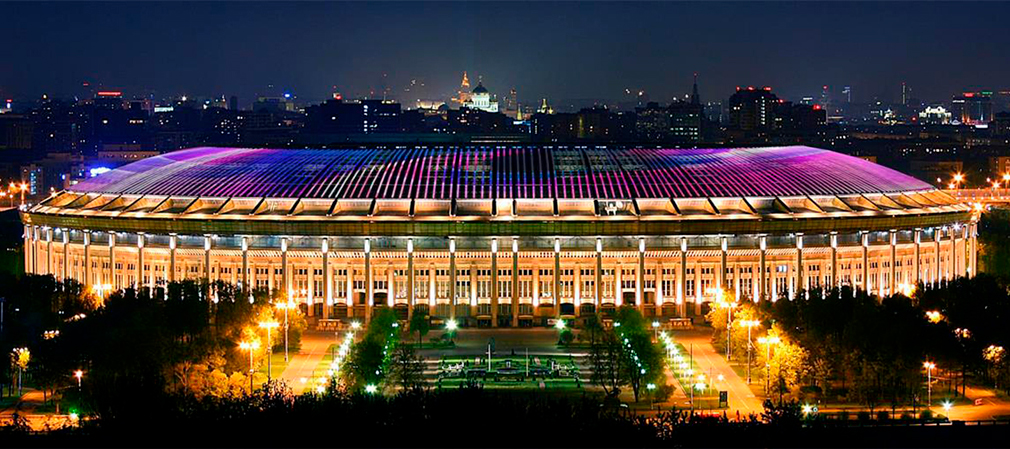
FROM:https://en.wikipedia.org/wiki/Luzhniki_Stadium
FROM:Luzhniki Stadium – Estadios Mundialistas | Copa Mundial de la FIFA Rusia 2018
FROM:2018 FIFA World Cup: Moscow’s Luzhniki Stadium (360 VIDEO)
FROM:Luzhniki Stadium – Moscow «National stadium of Russia»
Don’t you think it’s addictive?
Want to know more about the beauty of architecture?
Come and join our members to explore the beauty of architectural design.
覺得看得不過癮嗎?
想要知道更多建築之美嗎?
快來加入我們的會員,一同探索建築設計之美。
The above article is purely for appreciation and sharing purposes, as well as the construction of new technology and the public can be in-depth understanding of the information at the same time there are sources, will be able to query, no use of the document as a commercial transaction, if illegal, please inform the We will immediately remove the site, thank you for cooperation.
以上文章純粹作為欣賞及分享用途,以及將建築新型技術傳遞給與大眾能夠深入了解,同時資料還有來源,將可查詢,絕無使用該文件資料作為商業交易行為,如有違法請務必告知該網站我們將立即處理撤除,謝謝合作。

